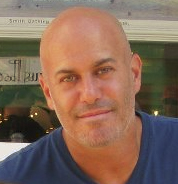3 min read
Speech Recognition Is Not A Cost-Effective Solution for Pathology
 Ross Weinstein
Thursday March 05, 2015
Ross Weinstein
Thursday March 05, 2015

That is not exactly the title you expected to read from the CEO of the leading speech recognition reporting solution company for Pathology, is it?
Well, I was recently interviewed for an upcoming article in CAP Today regarding the present state of speech technology in Pathology reporting. The author, Kevin O'Reilly, asked me to respond to a double-blind study conducted in 2012 by Steven Suvalsky, MHS, PA(ASCP) and Valerie Boelman, BS, LBC in Iowa. The study used comparable personnel in comparable surgical pathology departments to measure the return on investment of using Dragon software in a lab and transferring elements of the workload from the transcriptionist to the PA and the Pathologist. The conclusions of the study were...
- "The advantages for Voice Recognition (VR) are a shortened time for completion of reports and the ability to finalize reports without the aid or presence of ancillary staff."
- "However, the cost to accomplish this is significant and ongoing, which leads to rejection of VR as a replacement for Digital Transcription (DT) according to Industrial Engineering payback criteria."
 So one might ask, as the CEO of a company that develops speech recognition reporting solutions for laboratories, "Why in your right mind would you want to write a blog bringing attention to the fact that implementing a speech recognition solution (in this case, Dragon) in a laboratory will not show a Return on Investment according to the study's Industrial Engineering payback criteria?"
So one might ask, as the CEO of a company that develops speech recognition reporting solutions for laboratories, "Why in your right mind would you want to write a blog bringing attention to the fact that implementing a speech recognition solution (in this case, Dragon) in a laboratory will not show a Return on Investment according to the study's Industrial Engineering payback criteria?"
That's a really good question, but there is a method to my madness, and here is what I think the study helped to highlight about the technology:
- It can be used as an effective tool to decrease reporting turnaround time and eliminate the need for any non-medical staff involvement
- As a stand-alone tool it will likely lead to negative return on investment, because it will take longer to create reports
OK, so I said it again, but a little differently this time. There must be some point to this, other than career and corporate suicide, right? OK, you got me. Here is the catch...
Speech recognition technology -- used by itself -- is not a complete reporting solution
 A Pathologist is the doctor's doctor. Their job is to study cells and tissue samples and create a report about their findings. Dictating is only a part of the report creation process, and when combined with dictating into an AP System there are many other steps that need to be taken to create that report. Steps, that the technology alone cannot address.
A Pathologist is the doctor's doctor. Their job is to study cells and tissue samples and create a report about their findings. Dictating is only a part of the report creation process, and when combined with dictating into an AP System there are many other steps that need to be taken to create that report. Steps, that the technology alone cannot address.
This is why when we started Voicebrook back in 2002 we knew that we needed to create something more. That something more wound up being VoiceOver, the bridge over troubled waters that flow between speech recognition technology and the AP System. By creating a solution that incorporated -time savers- like Pathology templates (as much as 95% of the report is already completed), custom foot pedal integrations to "Talk and Tap" through a template and turn the microphone on and off, and voice commands that allow you to fluidly transition between non-speech friendly elements of AP systems, we were able to design a solution using Dragon speech technology that does demonstrate dramatic ROI and time savings for Pathology laboratories (20% more reports dictated at Stamford Pathology Group) .
While VoiceOver delivers even more features to help drive benefits to the report creation process, the software is still just one part of the solution. There are reasons that Nuance, our partner, and the giant in healthcare speech technology, does not actively pursue laboratory clients with Dragon...
- 20 plus disparate AP Reporting Systems each with its own unique tools and workflows that require custom integration

- Complex multi-stage reporting process where the report is dictated by multiple professionals
- Unique reporting requirements and formatting specific to Pathology
- Hands-free workspace that involves physically interacting with biological specimen
- High-volume report-centric specialty
To address these complexities, a second, and equally important part of the solution involves bringing in the right people, with the right background and skill sets and providing them with the right processes to ensure that laboratories successfully achieve their time, money, and report quality goals. All of the solution delivery staff -- from project managers to implementation specialists to help desk technicians and beyond -- need to understand the unique Pathology environment and be armed with proven strategies and best practices to navigate its challenges.
Lastly, while some benefits like turnaround time and accuracy improvements have not been measured in terms of financial impact, you can't put a price on the patient safety benefits of editing reports in real time while the specimen or slides are still in front of you. You also can't put a price on having reports available to the patient care team to begin treatment as soon as a pathologist completes their dictation (see Stony Brook University Medical Center Study on potential Financial Impact). Ultimately, it is our goal to empower Pathologists with solutions to help them save patient lives and improve patient outcomes. In the process of helping them deliver more accurate reports more quickly, we also save the laboratory money.
So, in truth, while I don't entirely agree with the conclusion of the Iowa Study as stated, I can also happily co-exist with what I believe the study did show. In fact, the study highlights one of the the primary questions that we tried to answer when we founded Voicebrook...
How do we take a world class product like Dragon and use it to help solve the reporting needs of our clients?
That is a question that all of us at Voicebrook have lived and breathed and continue to spend our time trying to improve upon on a daily basis. Check out our case studies and customer testimonials to hear more about how speech technology CAN be a part of a solution that benefits Pathology laboratories.

